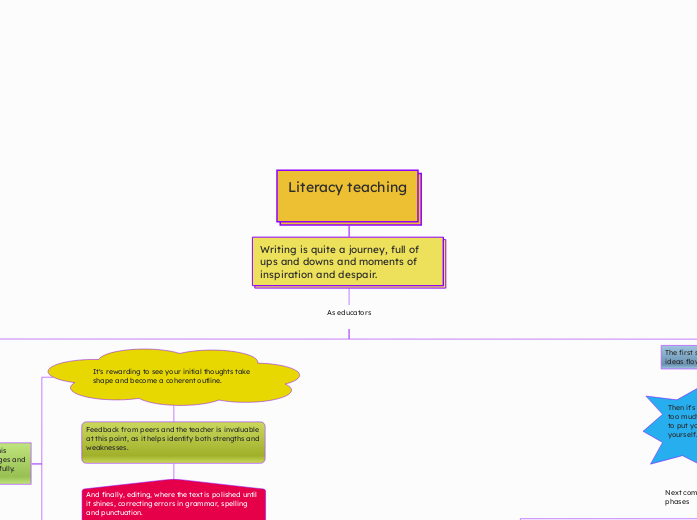Literacy teaching
Writing is quite a journey, full of ups and downs and moments of inspiration and despair.
As educators
It is our job to accompany students in this process, teaching them the different stages and modeling how to navigate them successfully.
It's rewarding to see your initial thoughts take shape and become a coherent outline.
Feedback from peers and the teacher is invaluable at this point, as it helps identify both strengths and weaknesses.
And finally, editing, where the text is polished until it shines, correcting errors in grammar, spelling and punctuation.
RIGTH
With the right guidance, you will develop the skills necessary to master this vital process.
The first stop is prewriting, where students let their ideas flow and organize them into a plan.
Then it's time to write the draft, without worrying too much about the details. The important thing is to put your ideas on paper, without censoring yourself.
Next comes the review, one of the most crucial phases
Here students really get to work, scrutinizing their writing and looking for ways to improve it.
It is important that we teach students to embrace each of these stages, since writing is not linear, but rather a constant back-and-forth between
editing.
revision
draft.
